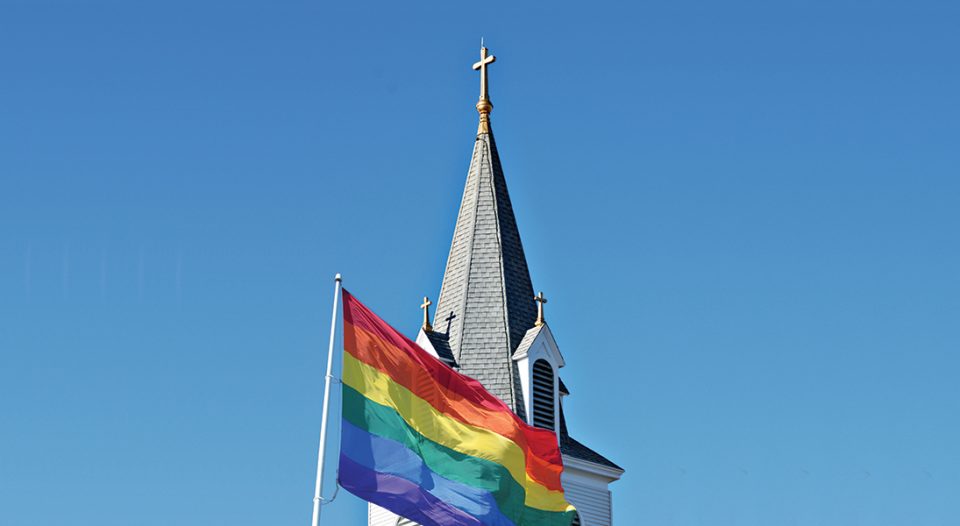During LGBT Pride Month (June), many ELCA congregations pay special attention to issues around sexual orientation and gender identity. Because the LGBTQ community has often been ignored or even condemned by Christian churches, some congregations seek to extend a specific welcome that directly addresses their spiritual needs.
The following suggestions for welcoming the community are based largely on my experience and the experience of my LGBTQ friends and church members—your congregation and friends may be different. One of the best ways to welcome and affirm us is to ask. Don’t be afraid to be ready to change.
1. Talk about becoming an affirming congregation.
Many ELCA congregations have not yet had a conversation about what it means to be “welcoming and affirming.” If key leaders (pastoral or lay) are ready to start that conversation, ReconcilingWorks can help. For more than 40 years the organization has helped congregations move toward welcome, inclusion and equity for LGBTQ people. Its national “Building an Inclusive Church” trainings are held year-round and equip church leaders to have affirming conversations and make public affirmations of LGBTQ inclusion in every level of Christian life.
2. Make your affirmation visible.
A statement of affirmation is only worth as much as it is seen. Clearly display your church’s statement on your website. Mention your welcome to LGBTQ people in your bulletin or other worship handouts. Since many church seekers turn to the internet for guidance, consider submitting your congregation’s information to one of the online databases of affirming congregations: gaychurch.org, the Welcoming Church map at Believe Out Loud or Church Clarity.
3. Continue affirming through worship and action.
“Officially” becoming affirming is only the first step. Include the concerns of LGBTQ people in prayers—especially those who suffer from discrimination or violence. Take note of local action around LGBTQ issues and bring a group from your congregation. Specifically invite your LGBTQ members to serve in leadership roles. Many of us have been told by churches that we aren’t allowed, so we may need to be directly asked before we believe you.
4. Look at sermon and curriculum content.
Do your church’s sermons only use stories of heterosexual people? Does your Sunday school curriculum prompt teachers to have kids “talk about it with Mom and Dad”? Not every family has one man and one woman. Remember your divorced and your same-gender-married parents. If jokes, setups and hypotheticals consistently assume a particular-looking family, it can be isolating for Christians outside of that “norm.” Look for stories about real people from the LGBTQ community as sermon illustrations, and make sure your faith formation includes them as well.
Specifically invite your LGBTQ members to serve in leadership roles. Many of us have been told by churches that we aren’t allowed, so we may need to be directly asked before we believe you.
5. Go beyond the L and G.
Most of our studies and resources have focused on what it means to welcome gay and lesbian people. But truly affirming the LGBTQ community means the B (bisexual), T (transgender) and Q (queer) too. How can we make sure we welcome all the members of the body of Christ?
Learn more about what it means to be bisexual. Stereotypes of bisexual people depict them as promiscuous and nonmonogamous, or expect them to eventually come out as “actually” straight or gay. Neither of these are accurate. A bisexual person does not “stop” being bisexual if they are in a relationship. Invite them fully into LGBTQ activities and celebrations no matter who they are dating. When you talk about same-gender marriage, avoid saying “gay marriage,” as it erases bisexual people.
Actively care for the transgender and nonbinary people in your congregation. Honor and celebrate gender identity and transition in your fellow Christians. Encourage all members of your congregation to include pronouns on nametags and in introductions: “My name is Emmy, and I use she/her/hers.” Establish a gender-neutral bathroom (with a changing table too) and indicate clearly where it can be found.
Pay attention to language. Although “sisters and brothers” can seem expansive and welcoming, it excludes nonbinary people (and may make trans members wonder if they are “truly” included). Alternatives include: siblings in Christ, family of God, beloveds, saints and sinners, friends, neighbors, companions, people of God and resurrection people.
6. Learn to recognize and care for spiritual trauma.
Some LGBTQ people have experienced serious spiritual abuse at the hands of the Christian church. Even if your church is welcoming and affirming, those wounds might not quickly fade. LGBTQ members who seem isolated or withdrawn, who can be angry or irritable, who are hypervigilant around words like “sin,” and who struggle with feelings of guilt and shame may be suffering from spiritual trauma. Encourage them into practices that will reaffirm their reality as beloved children of God who are wanted and welcome.





